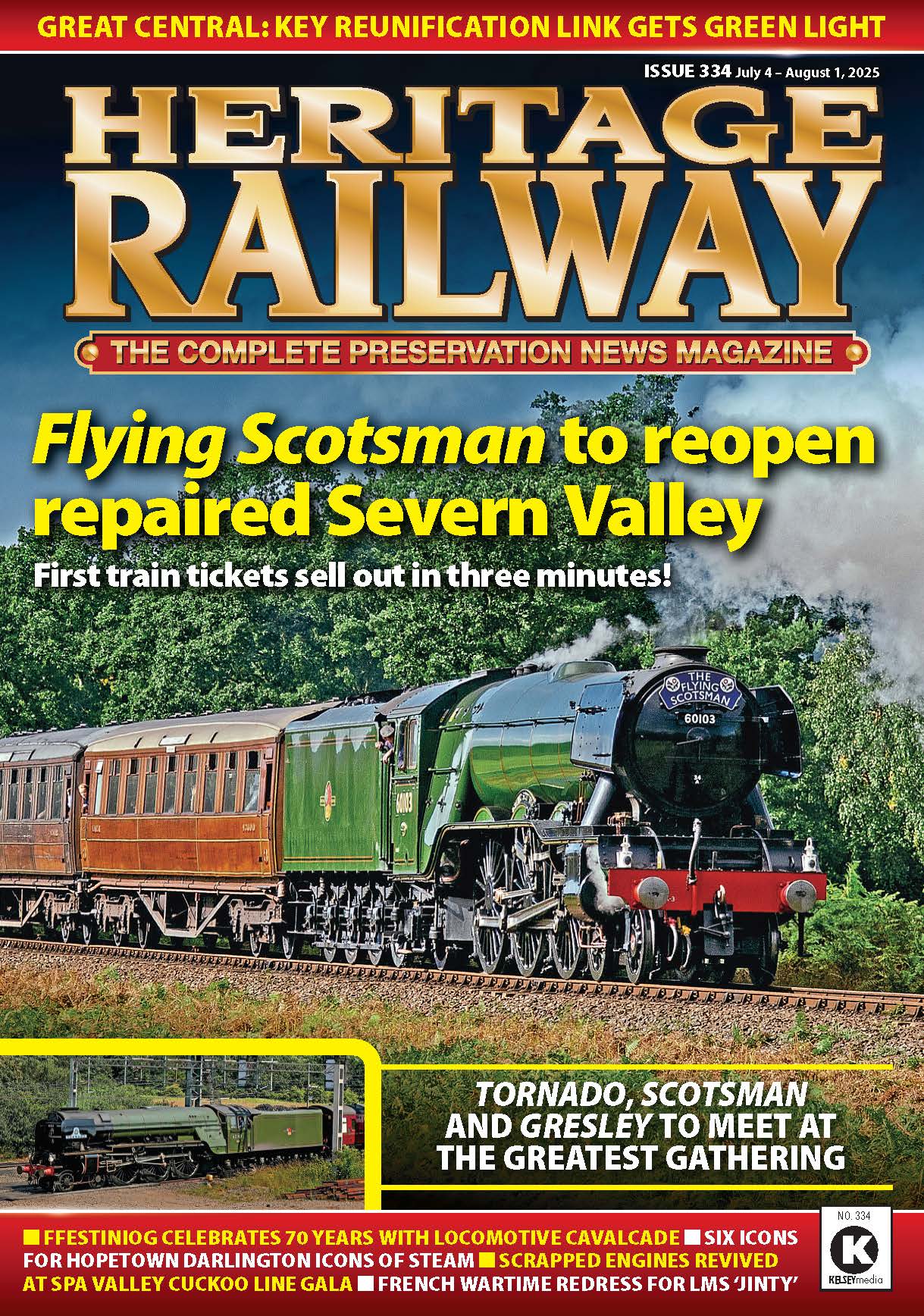I HAS taken 37 years from the time the early Gloucestershire Warwickshire Railway revivalists moved into derelict Toddington station, with the aim of restoring the entire 29-mile route from Stratford-upon-Avon to Cheltenham that had been lifted two years before, to reach the Cotswold tourist gem of Broadway. When Foremarke Hall triumphantly hauls that first public train out of Broadway on Good Friday, everyone throughout the heritage sector will feel a massive sense of pride and rightly so. We at Heritage Railway certainly do.
The railway has reached this goal stage by stage, without going into the red, using volunteer labour to inch its way forward over the decades, first reaching Winchcombe, and then Cheltenham Racecourse, and turning north, extending to Laverton and now the real jewel in the crown.
However, after a breathing space, will the railway extend much further? I have long believed that there is a sound business case for it to push south again, to Cheltenham High Street, if only to offer a DMU park-and-ride service from the racecourse for visitors to a congested town centre. And a northern to extension to Honeybourne, where a platform is already waiting for its trains, would offer the benefits of a main line connection and a massive boost for the local economy, with charter trains bring 500 visitors a time into Broadway from London and elsewhere.
Enjoy more Heritage Railway reading in the four-weekly magazine.
Click here to subscribe & save.
Yet look at the name of the railway. Broadway and Honeyboune are in Worcestershire, but as yet, there is nowhere in Warwickshire served by the line, and many have long doubted that it will ever do so. An offshoot group, the Stratford & Broadway Railway Society, disappeared many years ago when members threw in their lot with the Vale of Berkeley revivalists, and while it is still physically possible to push further north to Stratford, the phenomenal cost of building a link through the town to
the Network Rail station would clearly be out of the G/WR’s pockets many times over. I hold out hopes that major housing developments in Long Marston will underline the case for Network Rail to reopen the line back to Honeybourne, and then as a by-product the entire restored route could be used for steam specials, maybe from Tyseley, home of Vintage Trains.
While the G/WR volunteers had to rebuild every yard of their line from scratch, and now have nearly half of the original route running again – a truly incredible achievement – compare this remarkable project with that of the Wensleydale branch revival. The Wensleydale Railway, which aimed from the start to run community rail linking the towns and villages in the dale, a laudable ambition, not only took over a ready-made 22-mile line but also had aspirations to rebuild a further 18 miles to Garsdale.
Yet the trans-Pennine route which linked the Settle & Carlisle line to the East Coast Main Line at Northallerton lost its passenger services in 1954, nine years before the Beeching axe was announced, and some time before the tidal wave of mass car ownership swept Britain. Clearly there was comparatively little demand even back then, and more than 70 decades later, the dale had long since become entrenched in the use of road transport.
Still to have a line which runs into Northallerton station itself, and running to the ‘nowhere’ destination of Redmire, it is understandable why the revivalists not only struggled to make the railway pay but have incurred sizeable losses in trying to do so, resulting in the need to sell off Aysgarth station, an extension to which had been a medium-term goal, in a bid to balance the books.
We would all like to see rural railways revived as ‘real’ transport ventures as opposed to tourist or enthusiast concerns. However, the decision of the current Wensleydale Railway board to tailor the original aims and concentrate on making it pay as a class heritage line is both credible, pragmatic and some years overdue. There is still much that this line has to offer visitors – and volunteers – alike.
This new ‘about turn’ in the dale holds many positive lessons both for the existing heritage sector and those who draw up schemes to revive more lines, or take them over simply because they are there.
You don’t have to go to a Broadway, Bridgnorth or Whitby to make a success of a heritage line, but if you can’t offer “somewhere to somewhere” within a reasonable time span, think long and hard again before digging that first sod of earth.
Robin Jones, Editor
Advert
 Enjoy more Heritage Railway reading in the four-weekly magazine. Click here to subscribe.
Enjoy more Heritage Railway reading in the four-weekly magazine. Click here to subscribe.




